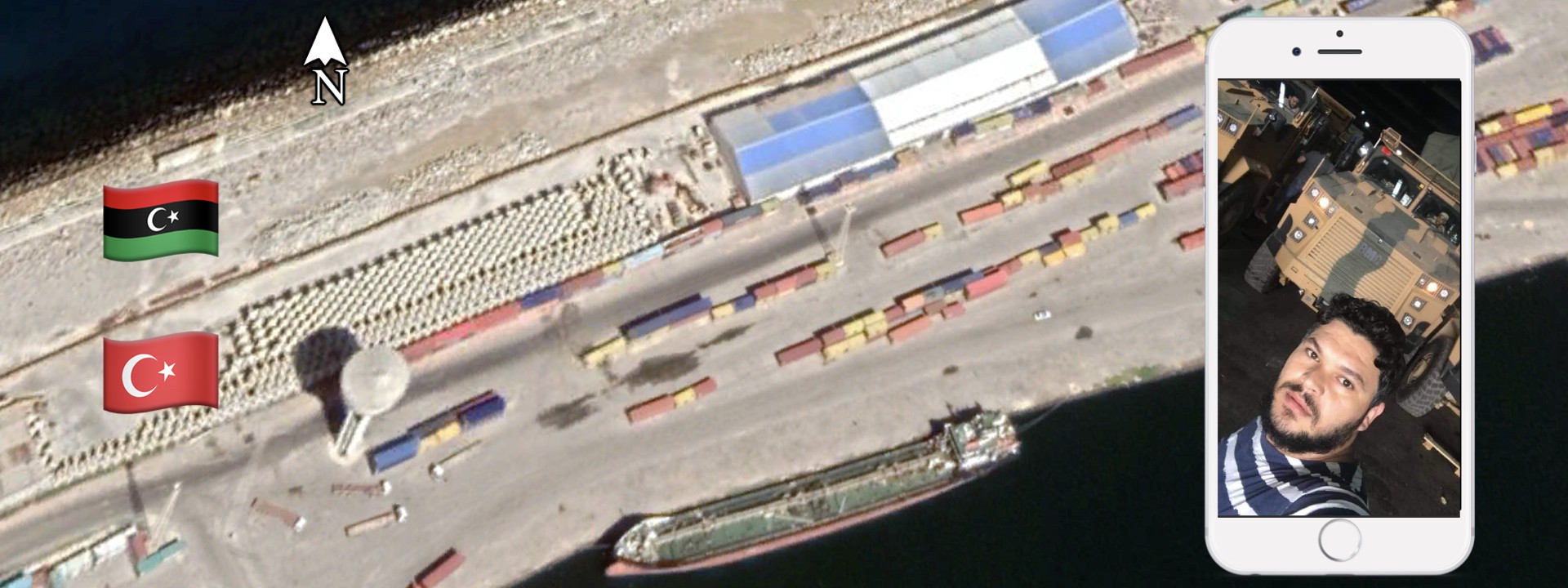Violating UN Embargo, Turkish Weapons Appeared in Libya
New photos raise more concerns for the growing proxy war in the country
Violating UN Embargo, Turkish Weapons Appeared in Libya

New photos raise more concerns for the growing proxy war in the country

Images published on May 19, 2019, revealed a cargo of Turkish-made military vehicles in Libya, despite the country being under a weapons embargo imposed by the United Nations.
A cargo-load of Turkish-made BMC Kipri Mine-Resistant Ambush-Protected (MRAP) vehicles were recorded in Tripoli, Libya, on May 18, 2019. Even though Libya has been under a United Nations arms embargo since 2011, foreign sources still funnel arms to both sides of the conflict in the country. Reportedly, Turkey sent to the forces loyal to the internationally recognized Government of National Accord (GNA). The other side of the conflict, led by Libyan warlord Khalifa Haftar, has received support from Egypt and the United Arab Emirates. These shipments increase the risk of further escalating what is already, to a large extent, a proxy conflict in Libya between foreign actors.
The reports about the new shipments started appearing on various media outlets as early as May 19, 2019, yet did not provide solid open-source proof. The videos and images that surfaced on social media outlets, corroborated with other open-source data, allowed the DFRLab to confirm that this shipment actually took place.
Turkish MRAPs
On April 27, 2019, President Recep Tayyip Erdogan of Turkey publicly expressed support for the current Libyan government in a conference held in the Turkish capital of Ankara. In his statement, Erdogan said that the current Libyan government is legitimized by people and that Turkey will do everything that they can to help Libya.
Weeks later, Turkey appeared to be have made good on its promise. On May 18, photos and videos surfaced of what appeared to be state-of-the-art Turkish military equipment at the Tripoli docks.
#Libya– correction video purportedly showing dozens of BMC Kirpi delivered from #Turkey unloaded at #Tripoli (not Misrata)
(shipment was through a vessel named "Amazon" that is registered in #Moldova, previous port was Samsun, Turkey) pic.twitter.com/U3BQmGobSj
— Oded Berkowitz (@Oded121351) May 18, 2019
Most of the photos showed armored fighting vehicles, which appeared upon closer examination to be Turkish-made BMC Kipri MRAP vehicles, which Turkey introduced at the 2018 Eurosatory Defence & International Exhibition.

Geolocation
Both surfaced videos and photos suggested that the MRAPs were delivered to Tripoli by a cargo ship. The ship’s name as well as unique International Maritime Organization (IMO) number were visible in the photos.
Searching the IMO identifier 7702657 in the ship-traffic website Vessel Finder, along with the name of the ship, returned a matching result for the “Amazon,” a Moldova-registered Ro‑Ro Cargo ship. The information on the ship tracking website also confirmed that the ship was present near the Libyan shore at the time. The data from May 21 showed that the ship had already left Libya but was still relatively close to the shores of the country, likely heading to the port of Samsun in Turkey.

This information was also cross-checked with both geolocation data and daily satellite imagery, all of which corroborated the May 19 news media reports.
In one of the photos, a water tower close to the cargo ship allowed for further geolocation. The cargo ship was docked in the northern section of Port of Tripoli, which appeared to be the primary cargo area for incoming goods.

The photos showing the unloaded MRAPs also confirmed the location. The vehicles were parked in a straight line only a few meters from the location where the ship was docked. High resolution satellite imagery allowed the DFRLab to identify the metal poles visible in the photos, together with another cargo ship. The same poles were visible in a selfie that Libyan soldiers took upon the delivery of the vehicles as well.

Lastly, satellite imagery from May 19, a day after the ship reportedly arrived at the port, further confirmed the location. Despite the low resolution, a close up of the imagery showed that distinguishing features of the ship matched the images available on VesselFinder of the Amazon.

Conclusion
Triangulating open-source geolocation evidence, ship traffic data, and daily satellite imagery allowed the DFRLab to confirm reports of a Turkish weapons shipment to Tripoli.
Both sides of the conflict in Libya have reportedly received arms from foreign actors, despite a UN-imposed weapons embargo. The Turkish government has previously vowed to prevent Libya from turning into another Syria. In doing so, it has become a chief ally of the current Libyan government. As both sides of the conflict benefit from foreign support, Libya is increasingly the region’s latest proxy war hotspot.
Follow along for more in-depth analysis from our #DigitalSherlocks.

